Field Hierarchy: A Metric for Understanding the Growth of Different Research Fields

Corporate researchers strengthen their expertise and technological capabilities in existing research fields and continuously explore new research areas to drive innovation and enhance competitiveness. This helps maintain a competitive edge in existing markets or opens opportunities to enter new ones. Such efforts not only uncover future growth opportunities but also help diversify the company's risks, while externally enabling technological advancements and fulfilling social responsibilities.
However, exploring a new field requires large amount of time and effort. Especially, for experts, there might be a preconceived notion that they are knowledgeable in adjacent fields as well. Yet, understanding the structure, trends, and research topics of an unfamiliar field is not something that can be achieved quickly. Hence, it becomes crucial to have methods that allow individuals, even without a background in the unfamiliar field, to easily explore and understand its trends. This is where the introduction of various features centered around Fields, Authors, Papers, and Research Intelligence become valuable.
Without any need for embellishment, “AI” has reached a pace of development and commercialization that rivals any other field. It’s not only advancing rapidly from a technical standpoint but also making deep inroads into everyday life, while simultaneously offering endless research opportunities in the academic field.
This blog serves as a guide for those who are not well-versed in the field of artificial intelligence and want to understand more about the field and its overall trends.
How to find out more about the field of ‘Artificial Intelligence’?
On Scinapse.io's Artificial Intelligence page, you can view general data and insights about the field, including the number of authors and publications. More detailed information is available through WikiData links, as shown in the screenshot.
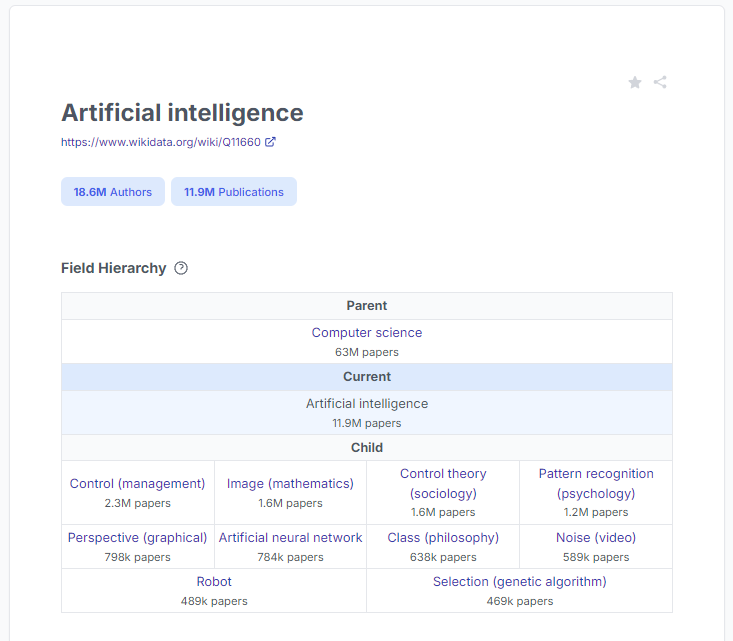
Note - you can add to favorite if you click the star🌟
Moreover, what sets Scinapse Field apart is its ability to view the ‘Field Hierarchy.’ This allows you to see the hierarchy of fields grouped and ordered by coverage and concentration. At a glance, you can find the composition of the Parent Field, which is the higher-level category of the Current Field you are searching for, along with the Child Fields, which are the subfields below it.
If you click on each Hierarchy, you can navigate the Field Hierarchy of the corresponding field.

User interviews revealed that the Field Hierarchy feature was particularly helpful when users had a limited understanding of a field. It proved especially valuable for entry-level researchers or those needing to familiarize themselves with adjacent fields and hierarchies related to their research topics.
“I found the Field Hierarchy very helpful because my understanding of the subfields was limited, and I wanted to learn more before starting my research.”
mentioned one of the users.
What else does the Field Page offer?

If you scroll down, you can check research trends in the Trends tab, which shows Publication & Citation Count trends within the field. This information can help you grasp field growth and popularity over time., as well as general trends within the field.
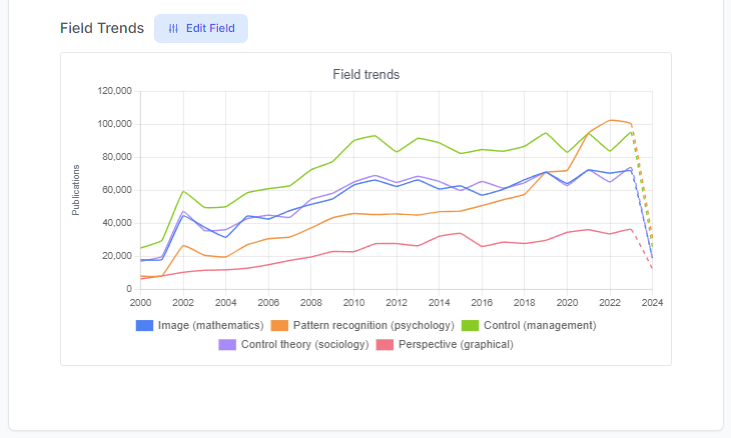
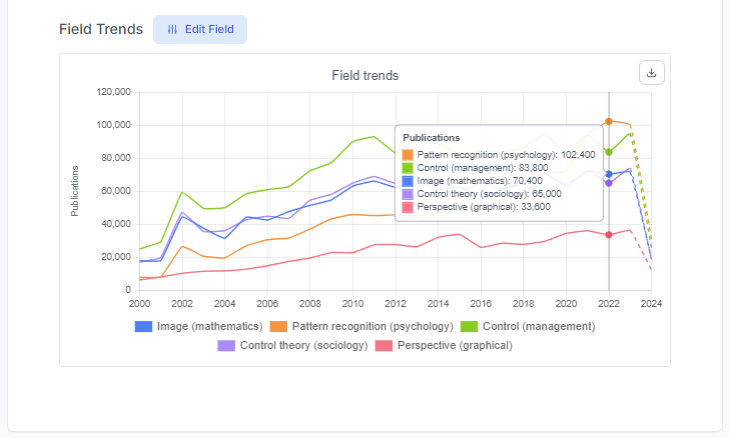
In addition to Publications and Citations Trends, [Field Trends] is also provided, which shows the yearly publication numbers for each child field within the main category. This allows you to easily see research trends of individual subfields in a graph, giving you an overview of how these trends have evolved within the broader category you searched.
For AI, compared to 20 years ago, most research has increased. Among them, Pattern Recognition in Psychology has dramatically increased, about 2.5 times compared to 10 years ago.

In addition to the [Trends] tab, you can access detailed data on top researchers from [Top Researchers] tab and the most influential papers in the field from [Top Papers] tab. You can also see the [Top Affiliations].
This includes a variety of sorting options such as recent publications, field h-index, field & citation publications, total citations, total h-index, and total publications, allowing users to easily find top papers in the field. Each entity page is also linked to the full information page, enabling users to seamlessly explore the relationships and connections between different elements and data. This saves time and makes the process highly efficient.
[💡TIP]
If you're looking to compare and explore various fields more easily, you can utilize the Scinapse Trends feature offered by Scinapse for field summary comparisons. On each Field page, you can quickly view key information such as annual publication trends, top papers, and recent leading researchers at a glance.👇🏻
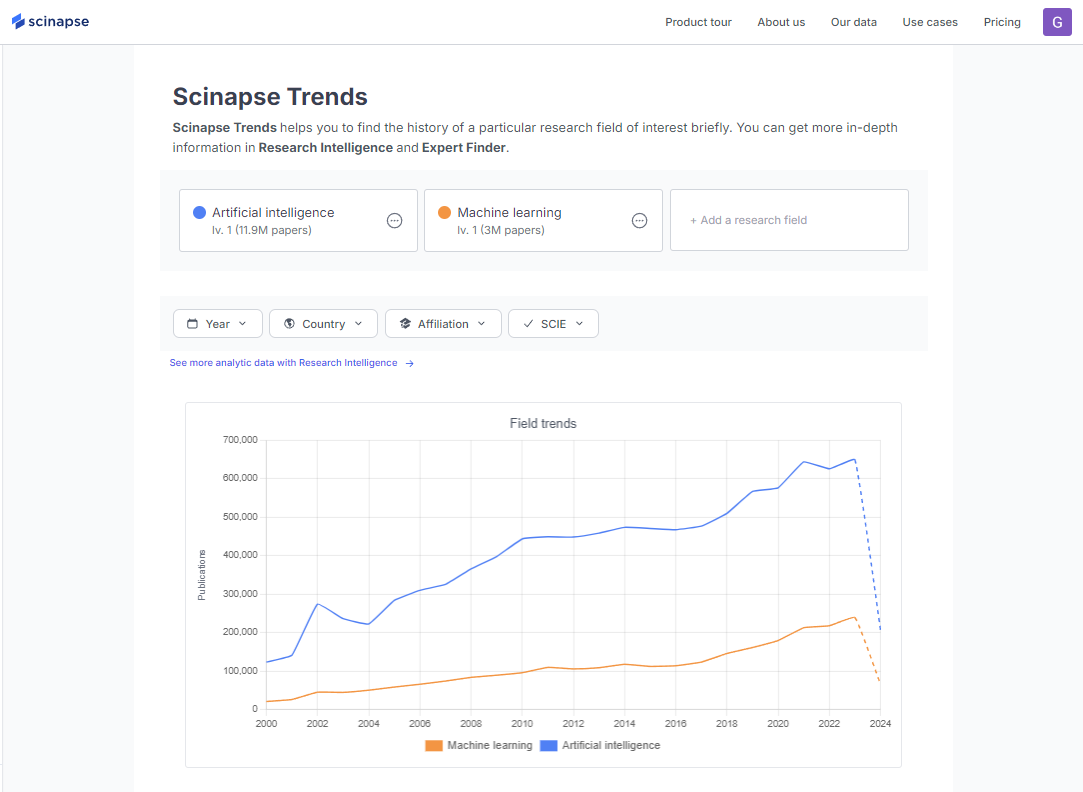
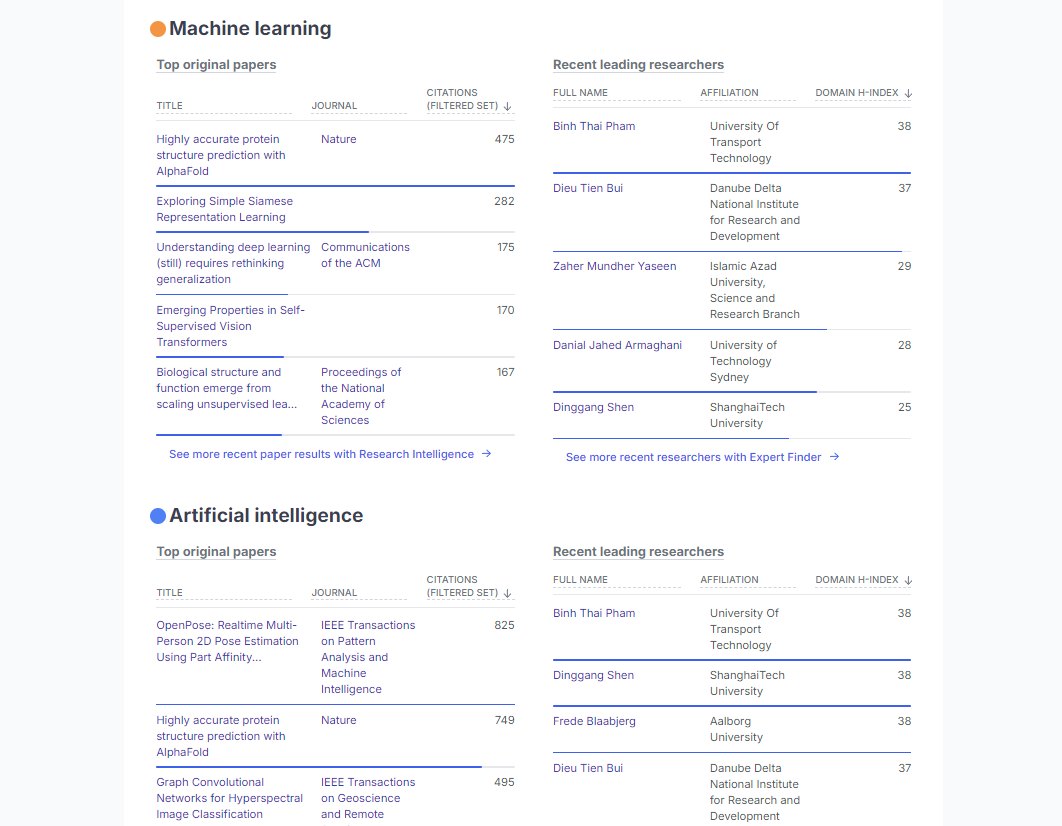
/ Written by Geehee Nahm
- Content Strategist specializing in AI and SaaS industries
👇🏻If you'd like to learn more in detail,
Never re-search again.
Scinapse is made by researchers for researchers.
Join the next generation of research at ⏯️ https://scinapse.io/
Pluto Labs
Pluto Labs helps researchers focus on their research by improving several inefficiencies in the academic research process. We offer data-driven insights from academic papers, allowing users to easily obtain review-level results for their desired range of papers.
https://pluto.im/

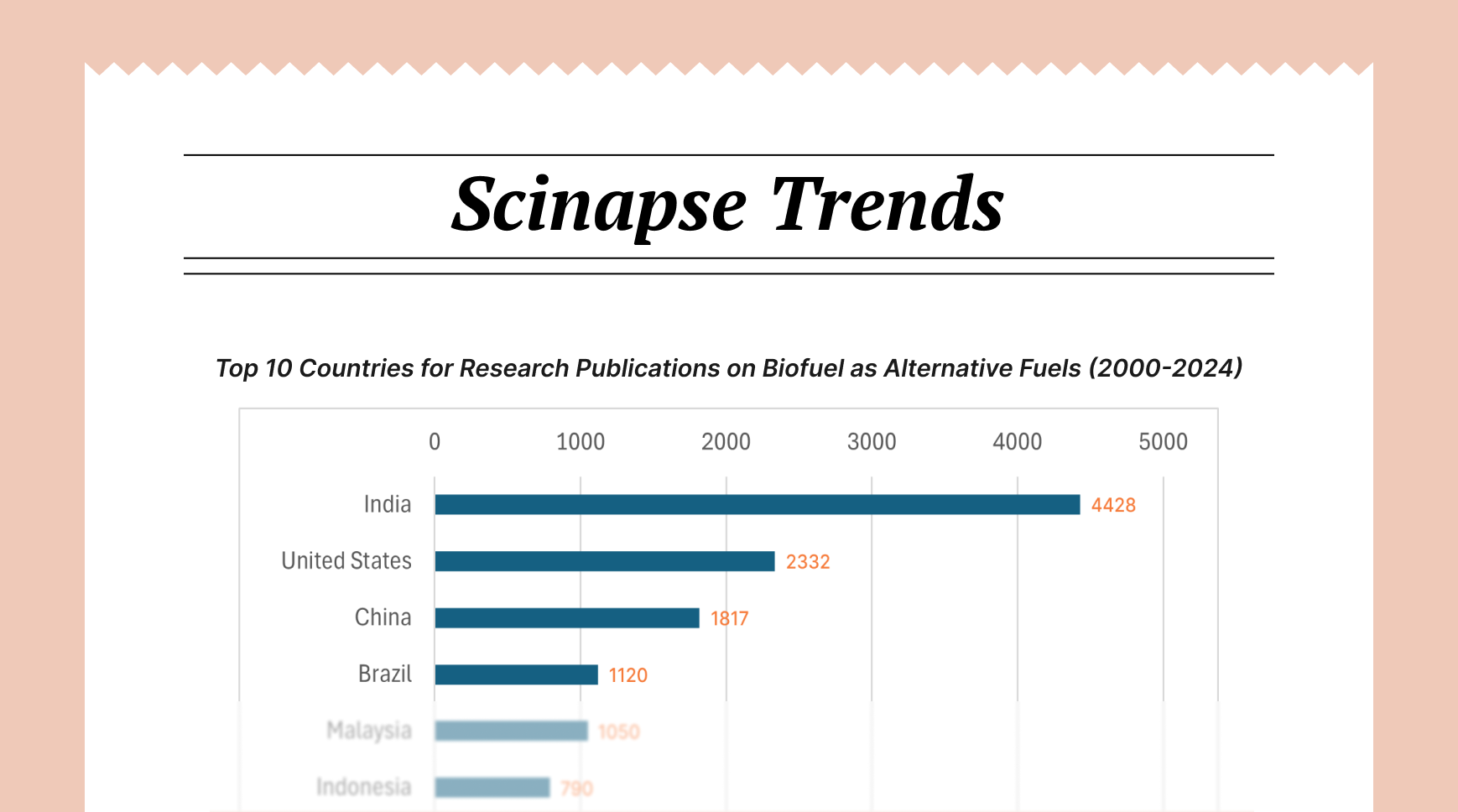
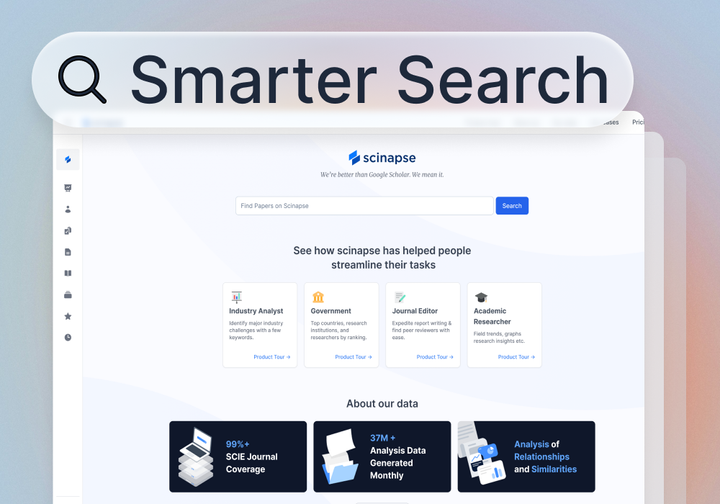

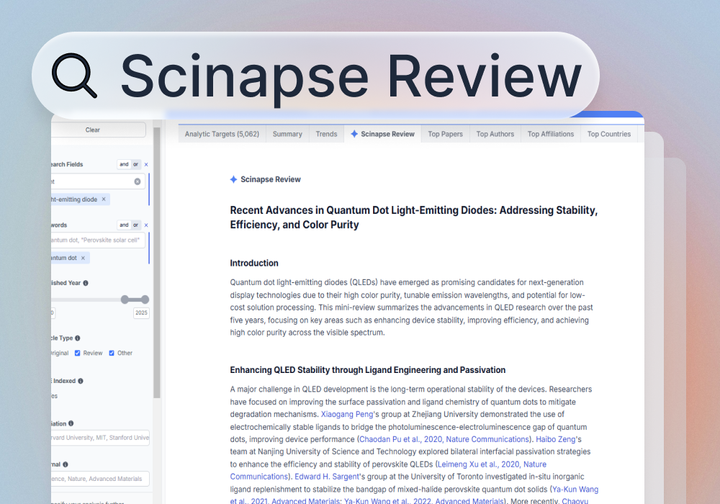
Comments ()